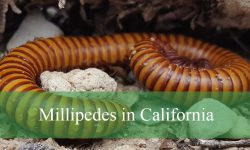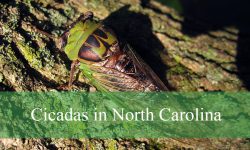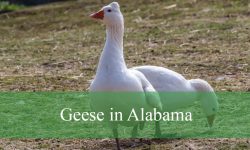Tennessee’s forests, parks, and backyards are home to an amazing variety of squirrels, each with unique colors, sizes, and behaviors. From the chatty gray squirrels in urban neighborhoods to the gliding flying squirrels of the Appalachian woodlands, these rodents are an essential part of the state’s wildlife. They help shape the forests by scattering seeds and providing an important food source for predators.
In this detailed guide, we’ll explore five squirrels found in Tennessee, complete with information on their appearance, identification, size, habitat, feeding habits, and fun facts. By learning to recognize these energetic mammals, you’ll gain a deeper appreciation for the state’s biodiversity and its vibrant ecosystems.
Let’s take a closer look at each one below.
Eastern Gray Squirrel (Sciurus carolinensis)
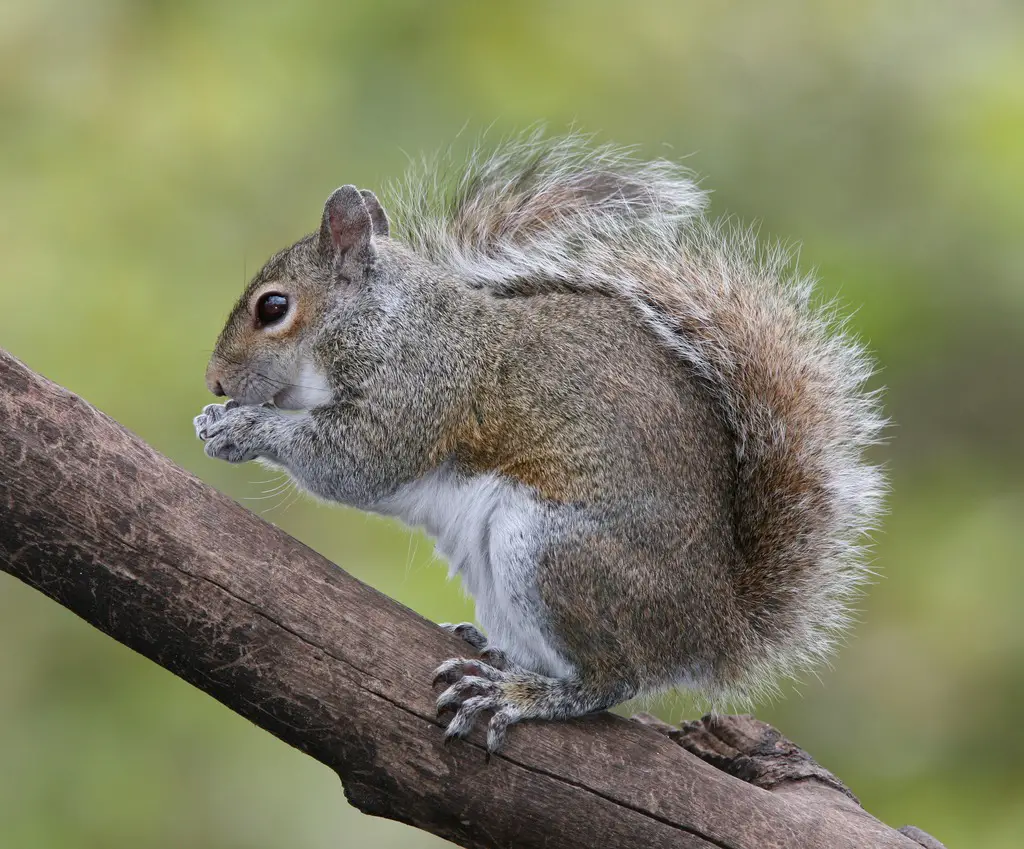
Identification and Appearance
The Eastern Gray Squirrel is the most common and widespread squirrel in Tennessee. It has a medium-sized, slender body with gray fur that may show a hint of brown on its back. The underbelly is pale or white, and its large bushy tail is edged with silvery hairs that glimmer in sunlight. Adults typically measure about 16 to 20 inches long, including the tail, and weigh between 1 and 1.5 pounds.
Gray squirrels have rounded heads with large black eyes and a white ring around them, helping with identification. Their fur can vary slightly across the state — squirrels in urban areas often appear lighter, while those in dense forests may have darker shades of gray or even a touch of reddish tint.
Behavior and Habitat
This species is diurnal and highly adaptable, thriving in both rural woodlands and suburban parks. Gray squirrels are excellent climbers, using their sharp claws and powerful hind legs to leap between branches. They build large leafy nests, known as dreys, high in tree forks, though they sometimes occupy tree cavities during colder months.
They’re social animals but also territorial, often chasing intruders away with loud chatter and tail flicks. In Tennessee, they can be found statewide — from the Appalachian Mountains in the east to the hardwood forests and city parks of the west.
Diet and Feeding Habits
Gray squirrels mainly feed on acorns, walnuts, hickory nuts, and seeds. They’re famous for burying nuts in the ground to save for later, helping reforest the landscape when forgotten caches sprout into new trees. In spring and summer, their diet includes buds, fruits, berries, fungi, and even bird eggs on rare occasions.
Fun Fact
Eastern Gray Squirrels play an important role in forest regeneration. Their habit of burying acorns and forgetting some of them directly contributes to the spread of oak and hickory trees across Tennessee.
Fox Squirrel (Sciurus niger)
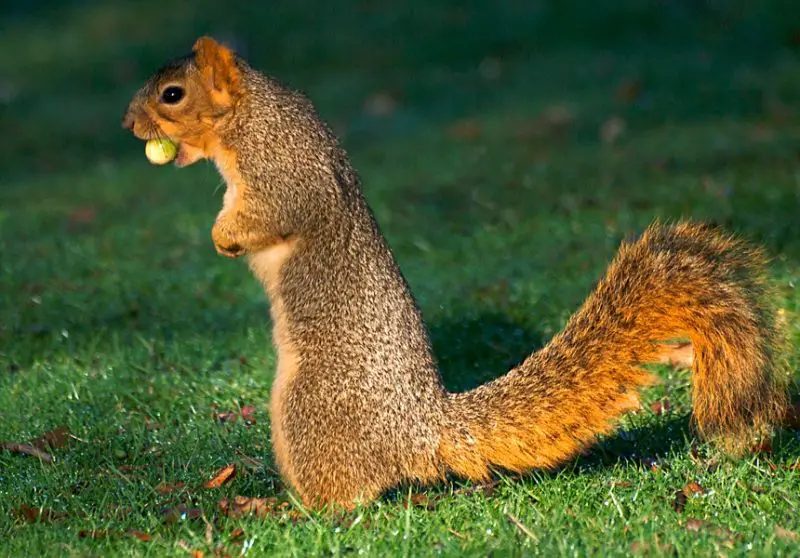
Identification and Appearance
The Fox Squirrel is Tennessee’s largest tree squirrel and one of the most striking in appearance. It measures about 20 to 27 inches from head to tail and can weigh up to 2.5 pounds. Its fur is a blend of gray, brown, and orange tones, with an orange belly that gives it a warm, reddish appearance reminiscent of a fox—hence its name.
The tail is long and bushy with orange edges, while the face may show darker patches or a black mask in some individuals. Fox squirrels can vary in coloration depending on region and genetics, ranging from pale orange to almost black in shaded forest populations.
Behavior and Habitat
Unlike the more agile gray squirrel, Fox Squirrels prefer open woodlands, farmlands, and areas with scattered trees rather than dense forests. In Tennessee, they are most common in western and central regions, especially where large oak and hickory trees grow.
They spend much of their time on the ground, hopping across fields or roads, though they can climb skillfully when needed. Fox squirrels are solitary by nature and use tree cavities or leaf nests for shelter. During winter, they reduce activity and rely on food stores collected in autumn.
Diet and Feeding Habits
Their diet includes a wide variety of nuts, such as acorns, hickory nuts, and pecans, as well as fruits, seeds, and corn. Fox Squirrels also eat fungi and occasionally insects or small bird eggs. They use their strong jaws to crack hard nuts and can carry food in their mouths while traveling long distances.
Fun Fact
Fox Squirrels have an incredible sense of spatial memory, allowing them to remember the exact location of hundreds of buried food caches for months.
Southern Flying Squirrel (Glaucomys volans)
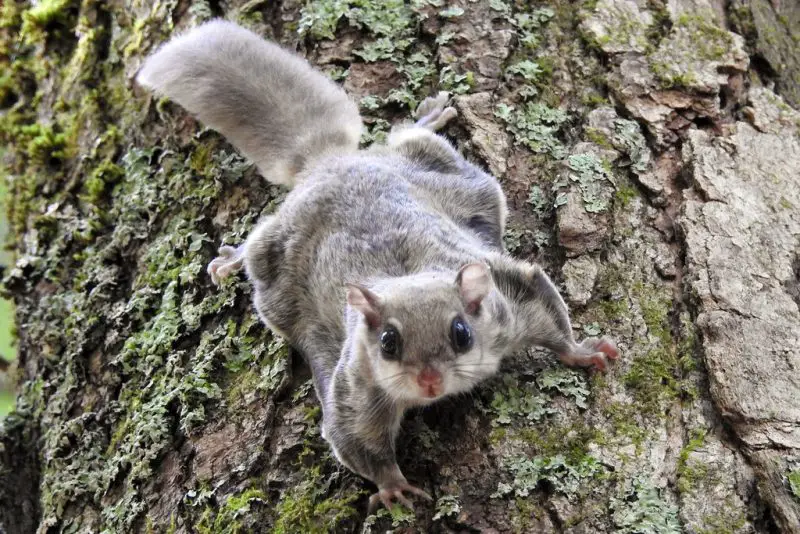
Identification and Appearance
The Southern Flying Squirrel is the smallest squirrel in Tennessee and one of the most fascinating due to its ability to glide. Measuring only 8 to 10 inches long, including its flat, feather-like tail, this squirrel weighs around 2 to 3 ounces. Its soft fur is silky gray-brown on top with a creamy white underside, and its huge dark eyes are specially adapted for nocturnal vision.
A distinctive skin membrane called a patagium stretches from its wrists to its ankles, allowing it to glide silently between trees. When extended, this membrane acts like a parachute, enabling the squirrel to travel up to 150 feet in a single glide.
Behavior and Habitat
Southern Flying Squirrels are nocturnal, meaning they are active mainly at night. They live in deciduous forests and wooded suburbs throughout Tennessee, though they are rarely seen due to their nighttime activity. These squirrels prefer mature trees with cavities, often taking over old woodpecker holes or nesting in bird boxes.
They are social animals and sometimes share nests during the cold season to stay warm. Their presence is often detected by soft chirping or high-pitched squeaks rather than by sight.
Diet and Feeding Habits
Their diet consists of nuts, seeds, fruits, tree bark, and insects. They also enjoy eating mushrooms and lichen. Like their daytime relatives, they hoard food for winter but also consume more insects and bird eggs than gray squirrels do.
Fun Fact
Southern Flying Squirrels don’t actually fly — they glide! Their gliding ability can cover impressive distances, and they can steer midair by adjusting their tails and limb positions.
Northern Flying Squirrel (Glaucomys sabrinus)
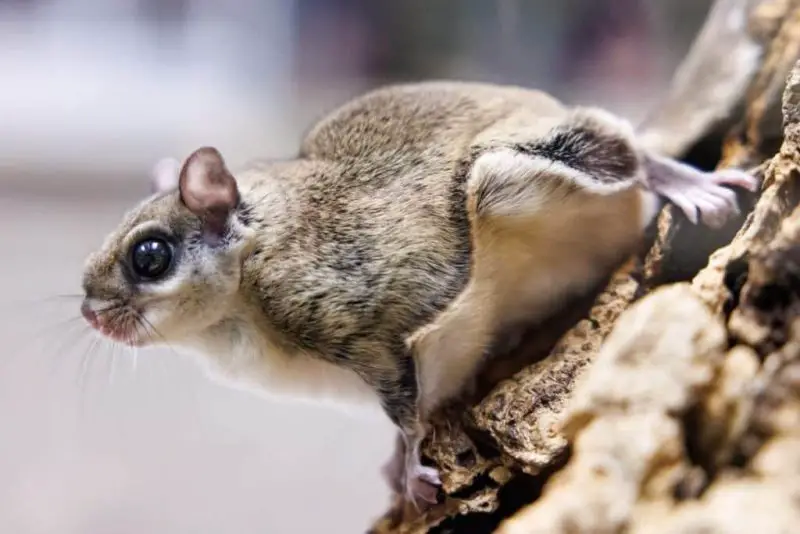
Identification and Appearance
The Northern Flying Squirrel looks quite similar to its southern cousin but is slightly larger, with a body length of 10 to 12 inches and a more grayish-brown coat. Its underbelly fur is white tipped with gray at the base, unlike the Southern species’ pure white belly. Its large black eyes and flattened tail also serve as perfect adaptations for nocturnal gliding.
This species is rare in Tennessee, limited mainly to the higher elevations of the Great Smoky Mountains and parts of the Cherokee National Forest. It is considered a species of special concern due to its limited range and declining habitat.
Behavior and Habitat
Northern Flying Squirrels prefer cool, moist, coniferous, and mixed forests found at high altitudes. They spend much of their lives in trees, nesting in cavities, old woodpecker holes, or even abandoned bird nests. Being nocturnal, they are rarely seen, but they are crucial indicators of forest health.
They glide silently from tree to tree in search of food, using their patagium to cover distances of up to 200 feet. Their social structure is loose, but they may share nests during cold weather.
Diet and Feeding Habits
This species primarily eats fungi, especially truffles, which it locates underground using a keen sense of smell. They also consume nuts, seeds, berries, and occasionally insects. By spreading fungal spores through their droppings, they help trees absorb nutrients — a critical ecological role.
Fun Fact
Northern Flying Squirrels are key partners in forest ecosystems because they spread truffle spores that trees need for nutrient absorption. Without them, high-altitude forests would struggle to regenerate properly.
Red Squirrel (Tamiasciurus hudsonicus)
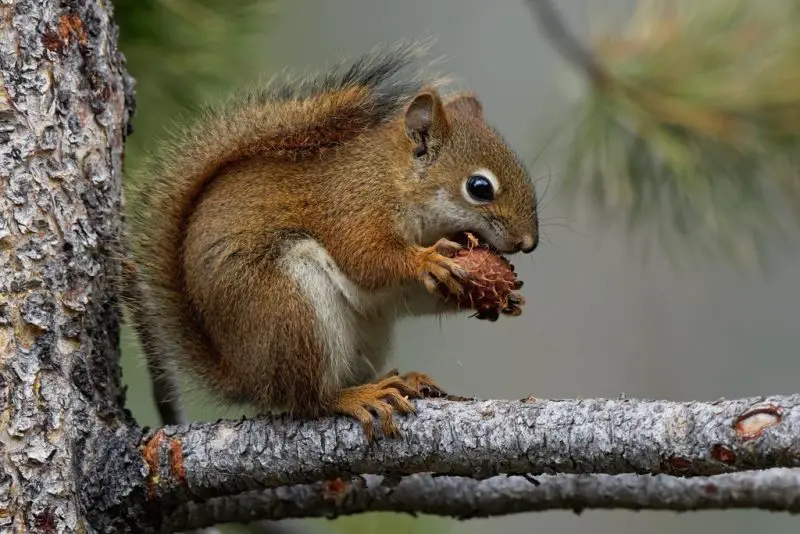
Identification and Appearance
The Red Squirrel is smaller than the gray and fox squirrels but more feisty in behavior. It measures about 11 to 14 inches in total length and weighs around 7 to 9 ounces. Its fur is a vibrant reddish-brown on the back, with a white or cream belly and a black line separating the two. The tail is reddish and slightly flattened, while the ears have small tufts of fur, especially noticeable in winter.
Its bright coloration and rapid, chattering calls make it easy to identify, even from a distance. Red Squirrels are most often found in the mountainous and coniferous regions of eastern Tennessee.
Behavior and Habitat
Red Squirrels are bold and territorial, known for their loud scolding sounds that warn off intruders. They prefer coniferous forests dominated by pine, spruce, or fir but can also be found in mixed forests at higher elevations. In Tennessee, they inhabit the cooler slopes and spruce-fir forests of the Great Smoky Mountains.
Unlike gray squirrels, which scatter their food caches, red squirrels create large central storage sites called middens, where they hoard cones, nuts, and seeds. They are active throughout the year, even during winter, though they may reduce their activity during heavy snow.
Diet and Feeding Habits
Their diet is based largely on conifer cones, seeds, nuts, fruits, fungi, and sometimes insects or bird eggs. They use sharp incisors to strip cones and dig into tree bark to access sap. Red Squirrels are opportunistic feeders and often raid bird feeders in mountain cabins.
Fun Fact
Red Squirrels have been known to store thousands of pine cones in a single midden. Some of these storage piles can last several years, and older middens can even become mini-ecosystems supporting fungi and mosses.
Tips for Observing Squirrels in Tennessee
Tennessee’s parks and trails provide excellent opportunities to observe squirrels year-round. Early morning and late afternoon are the most active times, especially for the diurnal species like Gray and Fox Squirrels. Bring binoculars and stand quietly near large oak or hickory trees where they often feed.
Flying squirrels require more patience — try visiting mature forests at night with a red-light flashlight to avoid scaring them. Bird feeders filled with sunflower seeds or peanuts can also attract multiple species, allowing for easy observation from your window.
Respect their space and avoid feeding wild squirrels directly by hand. This keeps both animals and humans safe while allowing you to enjoy natural, fascinating behaviors in their woodland homes.
FAQs About Squirrels in Tennessee
Are squirrels protected in Tennessee?
Yes, native squirrel species are regulated under Tennessee’s wildlife laws. Hunting seasons apply for certain species, such as Gray and Fox Squirrels, while flying squirrels are protected and cannot be hunted.
Do flying squirrels really glide?
Yes! Both Southern and Northern Flying Squirrels glide, not fly. They stretch a skin membrane between their limbs that lets them glide smoothly between trees.
Which squirrel is most common in Tennessee?
The Eastern Gray Squirrel is by far the most common species statewide, thriving in both forests and city parks.
Do Tennessee squirrels hibernate?
No, none of Tennessee’s squirrels hibernate. Instead, they remain active throughout the winter, relying on stored food like nuts and acorns.
Where can I see Northern Flying Squirrels in Tennessee?
They are mainly found in the Great Smoky Mountains and other high-elevation coniferous forests in eastern Tennessee, though they are quite rare.
Conclusion
Tennessee’s squirrels are more than just lively tree-dwellers — they are vital players in maintaining healthy forest ecosystems. From the chatty Eastern Gray Squirrel in your backyard to the secretive Northern Flying Squirrel of the Smokies, each species contributes to seed dispersal, soil enrichment, and the state’s natural beauty.
Understanding their habits, habitats, and roles helps deepen appreciation for these fascinating rodents. Whether you spot one gliding through the night sky or chattering in a treetop, Tennessee’s squirrels remind us of the wild energy that thrives just beyond our doorsteps.



